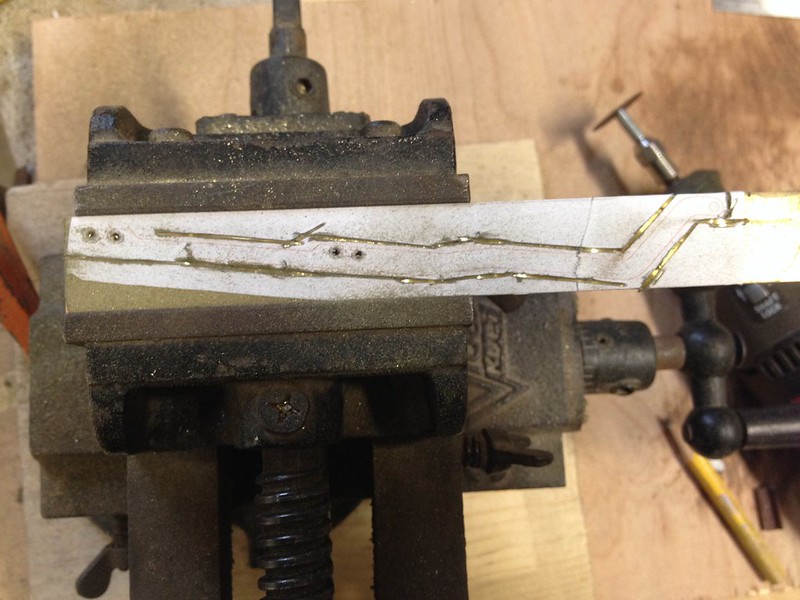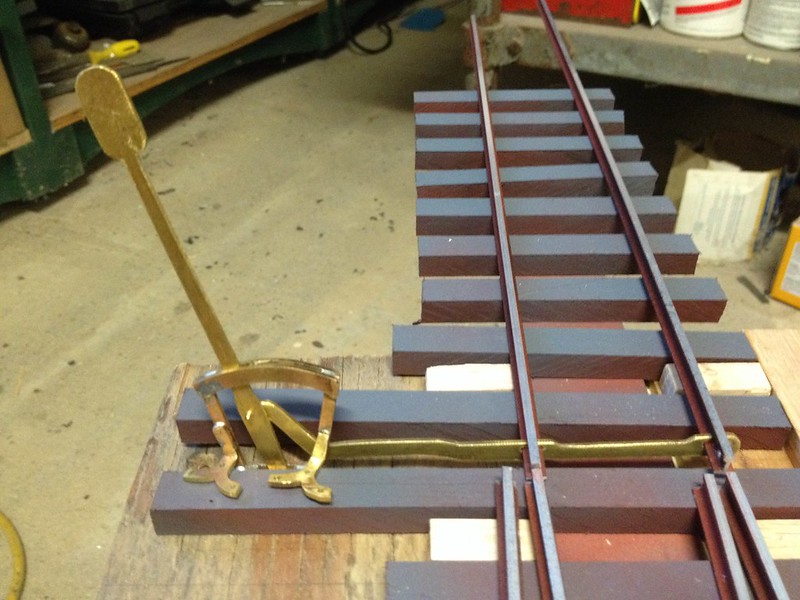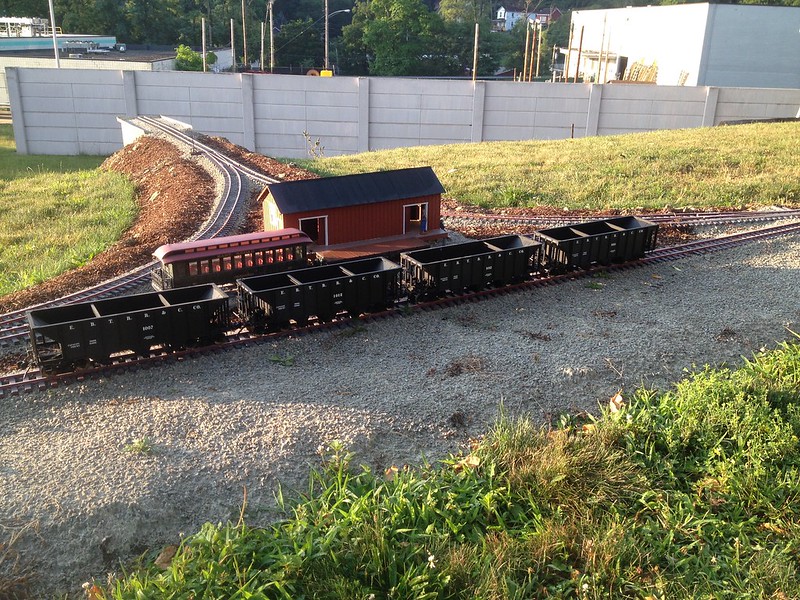I’ve been a bit of a stranger around here the last two weeks but it was for a good cause. I was prepping for the FEBT annual reunion. I had a clinic to prepare and lots of models to get ready. My clinic was on my method of F scale switch building. The basis of my method was a construction that could be used for both points and stub switches. This of course meant that I had to build a stub switch for presentation since Al of the previous 5 switches I built were points. I could not bear the thought of slapping a conventional style throw bar across the bottom of this stub switch, so this created yet another project. A working EBT style harp stand.
I had some drawing already worked up from some field measurements I took. I cut out and adhered each piece to some brass. Then there was much dremeling, grinding, and filing to follow. This can be seen in the first picture.
This second picture shows the nearly complete stand before paint.
And finally the finished product. It works exactly as the real ones do. You slide the weight up and out of the notch, swing the target bar over to the new position and let the weight fall down and lock it in. The soldering was pretty easy with the exception was getting the back cover for the weight soldered on without soldering it to the arm. This I had to take a second attempt at before I got it right.
I’m really pleased with how it turned out. It is an exact replica and it works flawlessly. SO, this accounts for about 9 hours that you didn’t see me, Keep an eye out for tow other ancient posts to show some resolution to account for the rest.







